This page exhibits the site entry featured during July, 2020. It was replaced to test a different approach to Plan B understanding.

Plan B: cooperation and collaboration. Inspiring social behavior. The barn goes up in one day. Notice: no whips, no drivers, no distinctions, entangled minds the lot.
Interesting Times
Landing on this website is the best thing that’s ever happened to you. As you now experience, the global impact of the COVID-19 menace has changed status quo living and the norms of social behavior, everywhere at once, and at warp-drive speed. Since the public at large found out the real world never left its lap, some of those changes will become habitual. The pandemic experience tests the efficacy of social governance to secure its population from menace – its purpose. The results it produces are beyond dispute.
The knowledge developed for this website about the communal experience of work is the platform for orchestrating and dealing with any social disturbances in a beneficial win-win way. It maps out the best possible methodology for handling upsets to organized human society.
While civilizations rise and fall; while wars come and go; while plagues flow and ebb, the platform of social behavior coded in our invariant human genome remains the same. Unfortunately for handling social pandemoniums, most of the settled truths of social intercourse in vogue are lies. As you note during these menacing times, “Ministries of Emergency Management” and the actions of high authority fail their purpose. But, you already knew that.
Whether past, present, or future, the mechanisms of action of social dynamics are universal constants well worth knowing. They apply in both stable and unstable conditions. This website provides your platform for understanding the world of social action before, during, and after large disturbances to steady state. You only have to learn them once.
This website is focused on Men In The Middle, MitM, an echelon in every hierarchical society. The special MitM distinction is formed by its intrinsic role. The mechanisms of action of social relations surrounding the MitM form the thread of discussion. The workmaster level of the hierarchy is the only hierarchical echelon indifferent to social rank. In these times of social instability, the MitM is the rock.
The man in the middle of the dazzling variety of social transactions going on, damned if he does and damned if he doesn’t, is a phenomenon unique to all tall hierarchies. The MitM label first appeared in literature during the 1880s. He occupies the level once removed from the laborers and at the bottom of the “command” pecking order. He knows that high, effective performance does not come from repairing the individual defects of low performance. Society functions as an integrated system with a trademarked ideology.
All MitMs are two-faced implementers, a Janus-like protagonist facing forward towards the collective’s goal with one gaze and engaging the pesky reality hampering his progress with the other. Dealing with disturbances is not routine operations. Every attempt at upset mitigation is a project – novel and temporary.
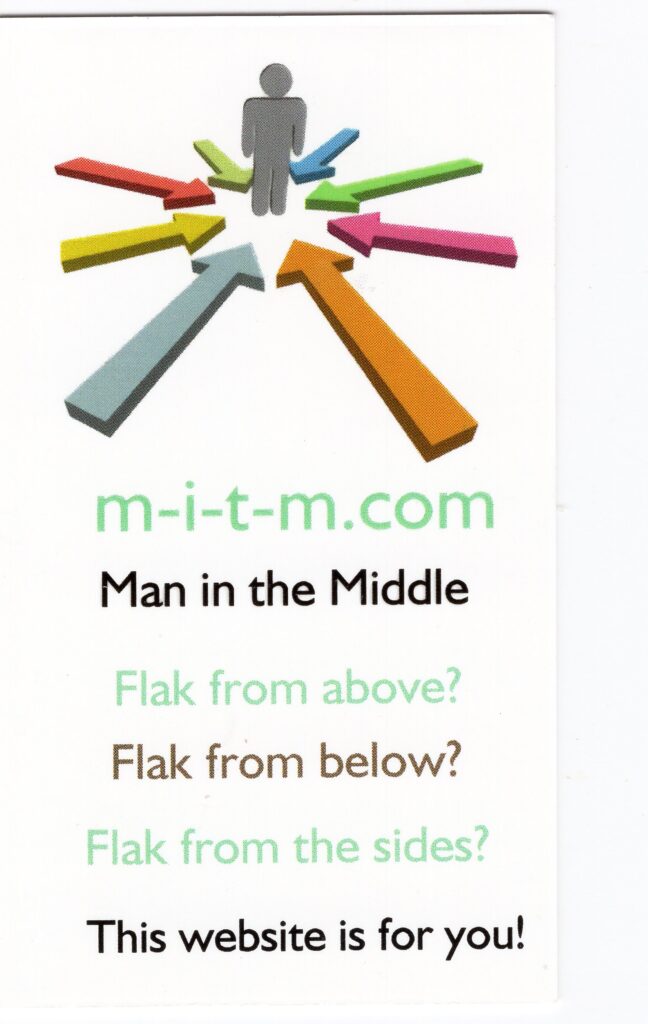
As maestro implementer, turning abstract aspirations into realized, tangible benefits, the MitM is loaded with responsibilities for producing the goods and services necessary to perpetuate the organization that no other level can realistically shoulder. At the same time he is laden with outcome responsibility, he is punished from all sides for anything that goes wrong in the business. As the all-purpose, all-occasion organizational punching bag, the MitM realizes his role has to be the most important one for continuation of the collective. After all, what other level in the hierarchy gets that kind of attention?
Because he is the foremost implementer of concepts and innovations, as projects, the MitM is the key link to organizational prosperity. That is why the foreman, workmaster, not the head shed, is the key to organizational success. As the name to blame, everyone knows the front-line leader is the responsible impetus for organizational success. After all, his level directly controls 88% of the organizational roster. He is the most prominent enigma in any social system. If you are a MitM, a foreman, that’s not news.
Social steady state is a delusion. If you’re not advancing, you’re deteriorating, and there are no rest stops. This website is about radical improvement to the MitM way of life, as radical as moving to a different country. Goal-seeking success takes desire, intelligence, attentiveness to detail, a viable plan, and the dreaded labor of thinking. Those inspired to improve their condition will make it through the associated challenges. No learning, no change, no gain. It’s always been that way.
As full-blooded MitMs ourselves, the rhetoric we use to describe the MitM paradigm is heavily biased towards bringing the unalterable MitM role to prosperity prominence. It’s how we project implementers understand, think, and act regarding the operational reality. To us, the forces of life are both ally and enemy. If you want to know the only methodology that works on pandemic-class disturbances to society, and for your own sake you should, follow the defining URLs.
The two ideological Plans of social behavior, A & B
Social transactions that meet your purpose and expectations register at the front desk of your emotional spa as organizationally neutral. The patterns of social behavior you engage that produce results contrary to your expectations, register as dysfunctional. As this organizational dysfunction (OD) dynamic is a ubiquitous condition, a norm of our modern culture carried forward intact from the Stone Age, its agency is called a Plan A social system. Its flagship dynamic is negative reciprocity – a characteristic of competition and aggression on display between kids in a playground sandbox. The brittleness of Plan A functionality and its path of least organizational resistance is now on the world stage. And, what a sorry sight it is.
In great contrast, you’ve also encountered occasions of cooperative and collaborative human social behavior that are win-win, memorable, and happy. They are social experiences of high goal-attaining productivity. This marvel of human society, working together in synchronization towards achieving a goal no individual could reach, is called a Plan B social system, graphically depicted at the top of this page. Its signature dynamic is positive reciprocity, the most beautiful social behavior on planet earth. The resiliency of Plan B to deal with monster threats to society is also on-stage, worldwide. Confusing Plan A social behavior with Plan B social behavior (same roster), is impossible. While global disturbances like pandemic control and sea-level rise present a challenge bigger than any of us, it is not bigger than all of us.

Social behavior is indeterministic. To that sobering fact add that most of the social behavior exhibited is involuntary. It is recreated as time passes by entangled, unknowable subconscious minds. In practice, social behavior is channeled by two “constitutions,” two forms of governance in ideological opposition. Plan A governance operates on domination by fear of punishment. Plan B governance operates on goal-seeking performance towards organizational objectives, the foreman’s bailiwick.
The sounds made by Plan A governance are loud, critical and angry. The first thing Establishments do when the disturbance is bigger than it is, is to muzzle their critics. Follow their media covering the highly-infectious pandemic.
Plan B success is not reported in the media at all. The fact remains; if you’re not in one ideology, you’re in the other. You know there are poor nations where its inhabitants are happy and there are rich nations where its people are angst-driven neurotics. Nature provides only two stable operational social systems. One is locked in the steady decay of defense, exterminating its silence-breakers, while squabbling over social rank. The other, engrossed with goal-seeking performance, is quietly flourishing.
The approach
The perspective taken on human social behaviors examined on this website is engineering science, system engineering, and technology. We gather, develop, and test mathematical-physics-based knowledge about social system behavior to learn how best to ease the social norm away from its “natural” propensity for self-destruction towards prosperity for the collective. Progressive bumps to Plan A steer the workforce towards social behaviors that, through the efficacy of nature’s laws and the power of deep mutual trust, build a secure future.
While empiricism has had top billing in social science for millennia, it consistently failed to deliver an OD fix. Plan A is a global failure on vivid display today as well as the contribution of the social and psychological sciences to control it. By success in realizing Plan B, also on display, we have demonstrated that engineering science is far superior to cognitively-biased empiricism for navigating social behavior towards Darwinian survival. It was engineering science that nailed the false assumptions that empiricism embraced for millennia. We knew we were on the right track when the social sciences aggressively rebuffed all our efforts to clue them in, exactly as they did to our mentors.
No one takes responsibility for the calamitous consequences of Plan A. Where there is no responsibility for bad results, there can be no mitigation of social dysfunction. Social behavior may be the product of invisible, psychological mechanisms of action, but it is a system phenomenon nevertheless and, like all of us viable “systems,” slave to the laws of system dynamics.
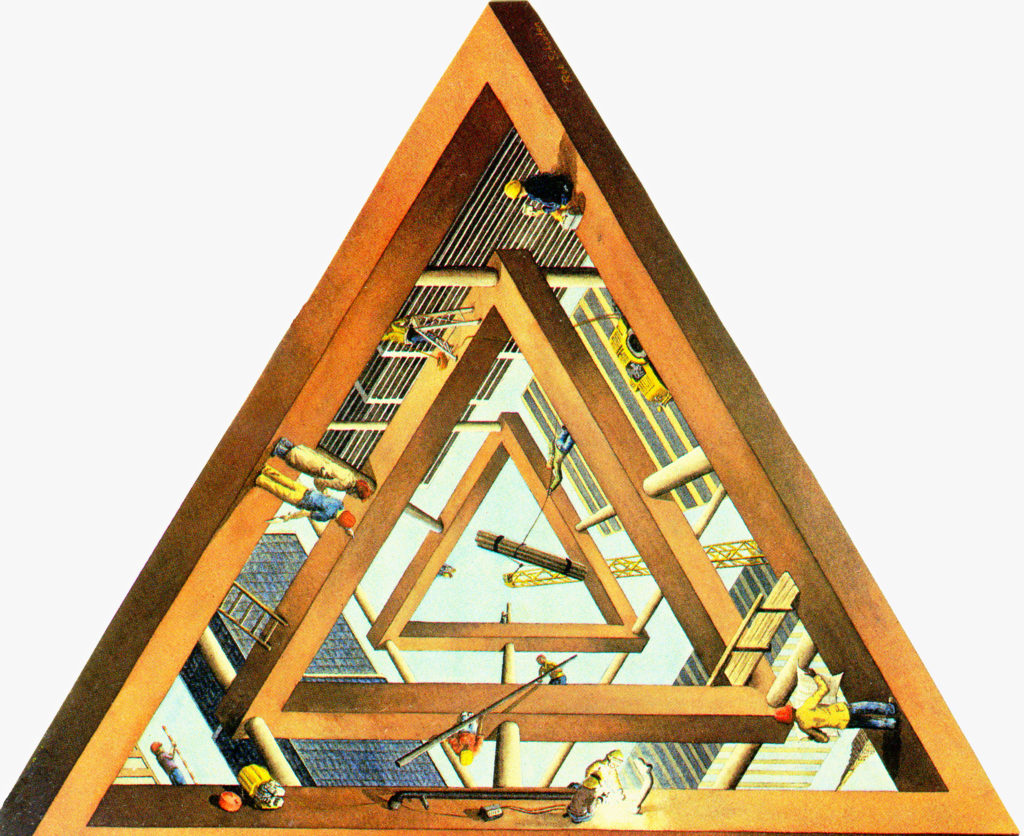
MitM
The paramount determinant for which pattern of social behavior, A or B, is on display in any large organization at a slice of time, the prime mover of your social behavior, is the Man in the Middle (MitM). It is the name of this website and its goal, human flourishing, has been long the focus of our attention. After all, as MitMs ourselves, it always seemed unintelligent to tolerate social dysfunction and suffer the consequences when we knew by first-hand experience it didn’t have to be that way.
The MitM occupies a hierarchical role about 250 years old that germinated with the advent of agriculture and then proliferated with the industrial revolution. Large collectives of any species, to function in concert at all, have to be hierarchical. Every multi-leveled human hierarchy is a nested ecosystem containing the MitM level. The concept “Man in the Middle” is a role including both leadership and performance responsibilities. He is both master and victim of double talk. If you don’t feel the squeeze, you won’t learn how to best engage the large amount of human capital available only to the MitM role.
To be useful, it appears to me more proper to go to the real truth of the matter than to its imagination; and many have imagined republics and principalities which have never been seen or known to exist in reality; for how we live is so far removed from how we ought to live, that he who abandons what is done for what ought to be done will rather learn to bring about his own ruin than its preservation. Niccolò di Bernardo dei Machiavelli (1489 CE)
Social System Reality
The widely-held fantasy of an invariant, infallible social paradigm, “business as usual,” the deeply-rutted path of least organizational resistance, is a confection of your unknowable subconscious mind. It is Nature, not man, who decreed that you must either engender survival of your species or else. Failure of a social system to adapt operations to the ever-changing operational reality, full of disturbances of various sizes, drives the deterioration of institutional viability.
Covering up for the wreckage of Plan A in these times of radical disturbance is self-defeating. Species extinction is the final act of defense. Denial of reality-on-the-move makes no sense, common or otherwise. Thanks to the Second Law of Thermodynamics, there can be no status quo anywhere in the universe except when its entropy, a measure of system disorder, increases to infinity and time itself stops. Only then do you really have steady-state conditions.
An example of intrasocial conflict, a norm in Plan A, is zero sum competition, a hotbed of distrust that is absent altogether in Plan B social intercourse. While zero-sum relations are quite popular, they are seldom valid. That is, the size of the pie declared to be in contention is not fixed. It is the ruling class that coerces zero-sum relations for everything, a control game it cannot lose. Management owns the casino and gets rich on the odds.
The assault on complexity
The mountains of evidence and opinion gathered by the dozens of fragmented sciences and disciplines in this chaotic, seething pandemic arena is well beyond the learning capacity of any individual, any collective. Expecting to make sense out of the variety of unconnected, granulated profusions of social behavior knowledge and guesswork so as to develop an effective “fix” for Plan A is delusional. Basic wrong assumptions, such as top-down command, have been carried forward for millennia.
When we did authenticate the fix in 2013, the advent of Plan B chain reaction, the first use we made of the achievement was to reverse-engineer the “fixed” system so as to discern the essential algorithms and conditions of the process that led to it. Reaching Plan B was the first time we were freed from black box testing for social behavior. Feedback from implementations continues to precipitate improvements to the Plan B paradigm. The implementation programs going on in 2020 are about 20% more efficient than the 2013 launch. The first episode of Season One, however, has remained exactly the same to this day.
Reaching Plan B status is an inside job of high-stakes trust-building that can only be done by the MitMs of the hierarchy. While getting the “inside job” done requires an outside interventionist to reach ignition, he is indistinguishable from the MitMs as he guides and channels activity towards Plan B ownership responsibility and benefit.
To end right, start right
We learned that changing the social-system behavior in our limited zone of competency consists of twin umbrella concepts, in tandem. It is a two-act play about Plan B. Both acts are performed by the conscious mind.
The first on stage, necessarily about structure, the rack to hang the data on, is named “Keystone.” When that configuration element is satisfactorily resolved in short Act I, the second umbrella, “system dynamics,” featured in lavish Act II dances, is the universally-familiar notion of “Trust.” There is no third umbrella.


Simplification is brought to the cacophony of vested interests in organizational behavior by this two-element edifice. When you commence learning about Plan B, you take everything in the vast library of social behavior that does not pertain directly to MitM “keystone” system configuration, amounting to 99% of what’s there, and throw it away. That is, if it doesn’t matter to the keystone-MitM matter, it doesn’t matter to what must take place. There is only one starting block in this sprint and it’s name is Plan B keystone. Any other launch pad, fails.
MitM, Plan B keystone, is the umbrella for structure, architecture, component and configuration information. The Keystone MitM, as prime mover of prosperity, is the only one who can bring change for the better into the organization. Plan B cannot be imposed by ruling-class force, as Plan A demonstrates to all.
All tall hierarchies have two keystone vectors, one for animating Plan A and one for orchestrating Plan B. This distinction is resolved by the end of Act I. “Keystone” is the requisite setting in the plot before Act II can commence. The Plan B keystone role is shaped by the same indisputable collaboration of Natural forces that prevent the Plan A keystone from delivering organizational prosperity.
In Act II, “Trust” takes center stage for the rest of the drama. Trust is the fragile intangible impetus and navigator of keystone process – the system dynamics. With the Plan B keystone in service, you take everything in the library of social knowledge unrelated to the trust/distrust dances and throw it away. Without high-stakes trust there is no Plan B.
Anyone can connect to the paramount role of trust in shaping his daily social life. If distrust is the operative context, transaction costs soar. If deep trust is the context of action, transactions are basically overhead-free.
Platform established, the understanding and engineering of social behavior to win-win benefit has an anchor. Since any fool can make things worse, Plan A doesn’t need a platform of interlocking principles to wreak its havoc. Blind obedience to authority and unthinking compliance to social norms, featured attributes of the subconscious mind, work just fine.
The pragmatic take on social structure
The human hierarchical collective, each one a full-scope ecosystem, is subject to Nature’s laws that govern the activity of all ecosystems. In any organization/ecosystem the role/level controlling to organizational prosperity or to its collapse, as mentioned above, is the “Keystone Species.” The great, unilateral power of the MitM role in the ecosystem to deliver sustaining organizational prosperity, Plan B, comes packaged in the social contract with a critically-important responsibility for results that MitMs can neither share nor delegate.
The MitM and only the keystone MitM is the vector of material benefit into the organization. The keystone of system Plan B is the link between Plan A (subconscious mind) and Plan B (conscious mind) worlds. He builds social system trust from the inside out. He uses the success of Plan B as his navigational aid. That’s why, exactly, his is the keystone role of Plan B.
As the architect of social distrust, the keystone of plan A is the CEO. He uses the global failure of Plan A as his navigational aid. That’s why, exactly, his is the keystone role of Plan A.
The Plan A organization can and does subvert and defang the Plan B keystone role in many obvious ways, but it cannot eliminate its function. The management hierarchy, congruent with Taylorism, did it’s best, from 1910 to 1940, to eliminate the MitM role – “functional foremanship.” This costly attempt to defy natural law failed miserably from the first.
In human society, the MitM functionality is, exactly, that of the engineering disciplines. It is the step-wise transmutation of a mass-less concept, a wish, into material reality. Going from blueprints to a working system of tangible parts delivering prosperity is an implementation role strictly reserved by natural law for the MitM. No other level of the hierarchy is capable of design/assign to the workforce – to make things better. Any level can make things worse.
Keystone species have zero functional redundancy in the ecosystem. If the keystone function is crippled, the umbrella issues of trust and distrust have no relevance. This means that when keystone functionality disappears, for any reason, the social ecosystem tanks. This phenomenon of ecosystem collapse is dramatically exhibited in every merger and acquisition. It is the real reason why, after two centuries of disastrous experience, M&As still fail. And yet the M&A business thrives.
As reported in the WSJ in 2020, the hospital industry’s focus on M&A, 2010-2020, involved $1.3T in value. The result for the “public benefit” has been a 6% increase in costs and a 20% reduction in the quality of care. Millions of hospital workers were thrown under the bus.
The reflex to the M&A shockwave is seen as a betrayal of trust in both organizations. It immediately ushers in the withholding of efficiency, a reflex called Ca’canny by the Scots three centuries ago. Its effect on productivity has been well documented for centuries. Today, science calls it “engagement.” The measured world average of fully engaged workers is 15.9% (2019). For the Plan B workforce? It’s 95%.

Navigating the website
The structured knowledge about organizational dynamics on this website covers organizational dysfunction (OD), dystopia (aka Plan A) and streaming organizational prosperity, a wonderfully productive, secure, sustainable, and satisfying way of social living called Plan B that now exists. The website contains five galleries:
- Introduction to system Plan B, superstructure and process, this gallery “Induction Center”
- The Man in the Middle, keystone of system Plan B, the main gallery of the website. Three “kernel” galleries are aligned with the flow of his transmutation so as to elaborate on the concepts
- The Front Line Leader Program (FLLP), the proven process for going from A to B
- The reference library covering Plan A, Plan B, and the A to B transposition process
- The entropy extraction library, “Legacy.”
- Bonus material – insight triggers for anyone
- JQP, John Q. Public. What anyone desiring benefit from Plan B knowledge can do to get it
Plan B is not excellence in crisis management, compensating for each of the Plan A system consequences as independent crusades. It is transposing the workforce of Plan A, the psychological network system, into Plan B, the psychological entanglement system, with the same roster of individuals. Doing so fixes all the consequences of Plan A at once. To those observing, the transformation is indistinguishable from magic.
The website focus on deriving Plan B benefits via mathematical physics is to show how its keystone MitM paradigm, trust-centered, solves the complex problems of a novel, fast-changing social context. It changes the operating environment over which conventional organizational “leadership” never had veto power. This crippling restriction on executive capability to bring prosperity, one that spooks all steep hierarchies, has created an unstable, progressively degenerating condition fueled by distrust, that continuing Plan A practices can only exacerbate. History contains no contrary examples.
There is also no historical precedent for today’s degree of social dysfunction, conflict, and planet-wide degradation of security. Plan A features depersonalization, polarization, suffocating transaction costs, and unrest, brought by diverse, significant technology advances into a rigid, maladaptive culture. The contrast between the two ways of revenue-generating functioning, with and without keystone MitM functionality and trust, is stunning. Stripped to its essence, Plan B is building a secure home with others based on mutual trust. In Plan B, equality means equality in liberty, equality in the opportunity to attain psychological success.
Getting acquainted with the Plan B paradigm begins with accepting the fact that business as usual, hostile to the MitM, is not up to the task of a Darwinian adaptation to cultural change. By comparison to Plan B, Plan A transaction costs are exorbitant. We consider the colossal failure of Plan A, when applied outside of its “zone” (i.e., tribes, where public flogging is still effective), to be a threat to survival of our species no less dramatic than a mega asteroid impact. Equality, in Plan A, means equality in restraint and servitude – denial of your psychological success for the good of the collective.
The large gallery for the Man in the Middle (MitM) keystone and his transposition from Plan A complicity to trust-based Plan B realization and husbandry, covers theory and concept implementation supported by reference and background layers. In Plan B, the front-line leader fulfills his keystone MitM role in delivering trust-based prosperity.
The keystone for Plan A is the head of the hierarchy, ex officio top predator of the organization, feared by all. He can never be the keystone for Plan B. Nature Herself forbids it. The terrible history of head-shed replacements on salvaging desperate, imploding Plan A institutions, long devoid of trust, is an expression of Her law. Everyone has personal examples.
Thanks to general beliefs, the men of every age are enveloped in a network of traditions, opinions, and customs which render them all alike, and from whose yoke they cannot extricate themselves. Men are guided in their conduct above all by their beliefs and by the customs that are the consequence of those beliefs. These beliefs and customs regulate the smallest acts of existence, and the most independent spirit cannot escape their influence. The tyranny exercised unconsciously on men’s minds is the only real tyranny, because it cannot be fought against. Gustave Le Bon, “The Crowd: A Study of the Popular Mind” (1896)
If you are uncertain about the obligations of your role in the social milieu, graze your way to gallery “MitM.” In short order you’ll have your answer. If you determine you are other than a MitM, but still a man of fairness principles, gallery “John Q. Public” is for you — unless you’re a Big Kahuna, an academic, or spooked about engaging the bedlam of reality, exploring this website will soon dose you with cognitive dissonance.

With his varied, built-in responsibilities, illustrated above, the MitM, working from the foreman level in the hierarchy, is the “Plan B keystone species.” He runs the organization’s revenue crew by design and assignment of their task actions. When Plan A dominates, like all engineers, he is socially ostracized top-down as well as bottom-up. Without fulfillment of the MitM keystone role, trust has no traction. What you get without unconditional trust are the multiple consequences of ecosystem deterioration that you’re getting from Plan A. In OD, distrust prevails. Everyone stays in CYA mode disengaged. You have no experience otherwise.
The only tool the head shed authorities of Plan A possess to control social behavior is punishment, an ill-natured act which kills any chance for prosperity all by itself. Punishment delivers the chronic underperformance that distrust-based transactions are noted for. Meanwhile, the head shed, by long tradition, conceals the fact the keystone MitMs of Plan B it disenfranchised retains unilateral, irrevocable power and control over organizational prosperity.
Stripped of a social identity, rehabilitation of the MitM as keystone, bell-cow of Plan B back into his psyche is our first order of business. It starts with interventionist trust-building. He uses a strategy so unique and immediately effective, you have to witness a performance to believe it.
The MitM role is the flagship of competitive advantage. It comprises 9% of the organizational population but it directly controls the actions of 80% of the organization’s membership. If you are a MitM, a foreman, a front-line leader, midwife to organizational prosperity, that’s not news.
The above 1902 graphic about the intrinsic span of responsible influence of the keystone role in Plan B says it all. It is a role attached to the front-line leader level and it is invariant with time and place. How could anyone responsible for organizational success not also be responsible for organizational failures? The CEO Plan A keystone is incapable of fulfilling any of the functions on the 1902 graphic. Nature forbids it.
The various branches of sociology have defined “social system” as a network of entangled subconscious minds, nothing less, nothing more, totally invisible. Having no mass, it has no inertia. That’s why the reaction to M&A betrayal is instantaneous. Our experience in high-stakes social behavior affirms the definition.
While the eternally-unknowable engine of social behavior is out from under the conservation laws and some Newtonian physics, the invisible network is still a dynamic functioning ecosystem and fully subject to the system laws of communication, control, and synchronization that run every ecosystem in the universe. If you treat a social system as a bunch of animated name-tagged flesh and not as a network of unknowable minds, your results will not align with your purpose.
Social system behavior is a wholly psychological phenomenon, context-driven, exhibited individual by individual and trust-mediated. When the human collective running on mutual trust synchronizes its efforts to build a civilization, Homo sapiens is unique in material and philosophical accomplishment among all species. When it is mal-aligned with the dynamics of material reality, as it becomes in OD (business as usual, rule-based behavior) its raging distrust can only build angst and animosity. You already know that.
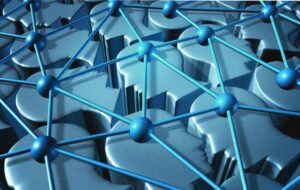
The Knowledge Bank is an eclectic collection of theory, laws, concepts, principles, practices, dictums, history, protocols and tools for use as a reliable source of implementation guidance and background not featured in the three “Kernels.”
The legacy gallery harbors the provisional concepts and variables. These are the subjects popularized in Plan A world with no bearing on reaching Plan B.
Everyone is familiar with the fact that we have become hamstrung by excessively bureaucratic organizational processes that stymie decisiveness and make it impossible to add value to the welfare of the organization. The difficulty is that organizational procedures undermine and destroy trust among the available talent that produces seriously-counterproductive results. Elliot Jacques (1980)
As you would expect, the history of mankind’s Plan A standard to the survival of steep hierarchical, class-based society, invariably bringing the downfall of once-thriving civilizations, is voluminous. Before 2013, earthlings had no experience with a self-sustaining, streaming Plan B to serve as the living master frame of reference – an incontrovertible standard, a demonstrable working model of the best attainable, trust-based societal way of life, large or small groups. It only knew that its many attempts, ungrounded in reality, to conjure and operationalize “Utopias,” necessarily tethered to Plan A experience, from Sir Thomas More to Robert Owen to B.F. Skinner, were total flops. There are no Shangri-Las hidden in the Himalayas.
As the library of OD accumulated, no one had access to the benchmarks of a Plan B to filter out the “knowledge” that is extraneous to reaching and maintaining Plan B. With no basis for triage of inputs, everything entered the collection pertaining to social behavior on equal footing, still there in the racks. Thousands of books on leadership excellence, e.g., and none on the Plan B keystone of the organized human species. The small library on trust produced by strangers is so far off the mark as to be counterproductive to learning effective trust building. You get the drift.
Nature entrusts its destruction to the thing itself. Every institution of this world ends by suicide. Victor Hugo
With Plan A deliberately reinforced by social conditioning as the only plan for social living Creation made possible, distrust became the foundation of society’s legal system heavily biased to favor its wealthy-class benefactors with a two-tier rule of law. Because Plan A is no longer an all-purpose means for survival of our species, at no time in the history of humankind have the stakes been higher or the choices clearer.
Out of the billions of Homo sapiens that lived, no one ever conceived of a viable Plan B, stoned or sober, from scratch. No potentate ever asked for a Plan B, except in wartime when obscene fortunes could be made quickly by humane treatment of those keystone MitMs positioned for producing munitions and ventilators.
Groundbreaking for the MitM sociotechnical library took place in 2013, when the long-sought Plan B trust-based, keystone-led social system finally ignited. It performed to specifications and stood the test of time. Positive results have led to more ideas for Plan B process improvement than negative outcomes ever did.
In most project work, defined as novel and temporary, positive reciprocity flowers but has insufficient time to fruit. Plan B, in practice, is like a construction project that gets a certificate of occupancy but never completes the punch list. When trust-triggered positive reciprocity fruits in MitM-driven Plan B, it’s 3-D, Technicolor, Oz on steroids. As the page-opening graphic reveals, it’s the most beautiful social behavior in the universe.
Anyone who tackles a significant project without first getting the goal-seeking social system in trust-based alignment with what must take place, via the keystone MitM, is a menace to society. Look what the Venetians did to themselves with their corruption-ravaged flood-prevention project. The 2019 flood damage alone exceeded total prevention project costs by a factor of five. No lessons were learned.
The all-others gallery, provided for John Q. Public (JQP), is where reality-based implementers, proud and accomplished complex problem solvers, can realize personal benefit to a bankable degree from possessing and applying modules of the sociotechnical knowledge contained herein. JQPs can learn how to create a portable trustworthiness zone that follows them around.
Non-cooperative, distrust-based Plan A social systems that deliberately cripple keystone-level functionality, because they can, only get less productive with time. You have no experience otherwise. This result is driven by indifferent Nature, not by personality profile, leadership charisma, or low breeding. Scrutable connectivity to natural law, covering keystone and trust, is the backbone of plan B.
To go forward in learning, it is essential to appreciate and account for the plain fact that you live in a social environment of arbitrary restrictions on learning and knowledge development, disfigured by distrust, that impair your ability to deal with the various material and social complexities of today. The tribal-chief culture in play is inherently hostile to keystone MitMs.
Only by trial and error, by insistent scrutiny and by readiness to re-examine presently accredited conclusions that we have risen, so far as we have risen, from out brutish ancestors; and I believe that in our loyalty to these habits lies our only chance not merely of progress but even of survival. Judge Learned Hand

For JQP
After decades of focus on the keystone front-line leader role, the requisite vehicle and prime mover to operationalize trust-based Plan B, we have only recently given consideration to the utility of the developed sociotechnology to the “ordinary” anxiety-plagued citizen captive in Plan A distrust.
The sociotechnology of this website provides a clinic in deliberately shaping social behavior, through context control, so that a collective can stream its own prosperity, indefinitely. Transposing from Plan A to Plan B is a unique intellectual achievement your self-image can be proud of. No one pilgrims from Plan A to Plan B without replacing his troubled self-image with a healthy one, as keystone class exemplar, through his own efforts.
The page labelled Audition in this gallery, provides a starter package of trust-building schemes you can execute to immediate benefit:
- You will experience an example of hyper learning
- You will witness patterns of social system behavior you never imagined could exist
- Your peers will perceive you differently
- You will understand why business as usual, invariably leads to organizational dysfunction (OD) as the hierarchy grows vertically
- You will have demonstrated to yourself a practical means for protecting yourself from OD consequences
- You have demonstrated a means for you to avoid pursuits of the impossible
To live in Plan A’s distrust or Plan B’s trust is always your free choice. You do not possess enough strength to stand pat on the Teflon-covered A/B intersection. If you don’t consciously push off towards Plan B, social tradition tugs you down the slippery slope into the Plan A abyss. Once you do head off towards the win-win outcomes of Plan B, reverting back to Plan A soon becomes inconceivable. Because you are always free to choose, you are in full control of your efforts throughout.
To restate: man’s social behavior is a psychological phenomenon – common property. You remain fully captive to your social system regardless of physical separation. The network of individual nodes that channels social behavior is composed of entangled subconscious minds, nothing more. Social behavior is composed solely of individual action shaped by roles, context, and relationships all under the umbrella of trust. There is no material social form, no architectural construct. Its actors are fungible. There is no central control room. There is no Captain Nemo mastermind. Prosperity is conscious-mind psychology. Its chemical marker is oxytocin.
Towards Plan B
To us MitM professionals, concept-implementation freaks, trust-building keystone level for sure, the social system dynamics field became compelling after observing that all the steep hierarchical organizations in global human societies synchronized at dysfunctional – turning once producers of valuable surplus into parasites on their stakeholders. This defensive dead end of distrust is not the stuff of species survival in rapidly changing conditions and unannounced, unforeseeable threats.
In larger organizations, the Plan A keystone, top predator, routinely suspends inalienable human rights with an impunity paid for by the ruling class to Establishment’s political, media, and legal arms. If Plan A is the only possible social template there is, yes, you’re stuck in it. If it’s not, until you act, you’re still stuck.
Commentary from a veteran:
In my view, OD is like when the organization requires you to attend a training class on “Managing Disappointments” and the teacher doesn’t show up. Yes, the cognitive rents to stay in OD are very low, as advertised, but it’s a terrible place to raise children.
Our breaking of the silence about this world-wide condition will present little you don’t already know. The toll extracted by dysfunctional, untrustworthy social systems from the population is so monstrous and diverse, the self-destructive Plan A process continues deliberately unmeasured and unaggregated (covered-up) – undiscussable.
Nature levies a stiff tax on our species for suppressing the instinct of workmanship and passively enduring the consequences of social dysfunction via keystone functionality sabotage – and everybody gets to pay it. The ruling class, top predator, keystone in Plan A human collectives, plagued by high turnover itself, gets no exemptions from indifferent Nature and Her ruthless tax collectors. It will not escape consequences for its botch-job of the pandemic.
The menace of organizational dysfunction to the survival of our species has not gone unnoticed. In the last two hundred years, global society spent a quadrillion dollars engaging the monstrosity of social dysfunction, testing candidate remedies, and paying for the consequences of failure. Being grossly incompetent in solving complex problems itself, a characteristic of all Plan A societies, the resources were wasted. While the quadrillion is gone without delivering a fix, the impotent armies of change did leave the social landscape littered with human debris and a recorded history.
The global scene of relentless, progressive societal self-destruction examples Gödel-Einstein’s 1939 mathematical proof that a Plan A social system allowing itself to get into dysfunction mode cannot get itself out of it. None ever has. Yes, you can fight off a challenger to your social status, but how do you fight the mathematical-physics destiny of the indifferent cosmos that runs all ecosystems?
While it’s easy to paint social behavior in broad strokes so as to duck the core issues of keystone and trust, it’s the details (local, particular, future) that bring OD consequences straight into your way of life. The odds are high that you will encounter pandemic follies before the day is over.

And then, Advent
A variety of Establishment social research initiatives over the last century did report on some of the critical factors to a Plan B. Independent threads of inquiry pointed to the paramount significance of the revenue-crew foreman, a MitM by role, the keystone of organizational health. The US military, for one example, having a vested interest in battlefield performance, investigated what really distinguished winners from losers in combat operations.
As history recorded many instances of the defeat of large armies by smaller ones, keeping the search for root cause of battlefield victory alive, decades of field research came up with the same finding. It was a fact-driven conclusion about competitive advantage the high-command officials funding the research did not want to hear.
In study after study, the only variable that affected group performance and effectiveness was the competency of the foreman, the front line leader, Jedi keystone of organizational effectiveness, always a MitM by role. Discounting that unexpected outcome, pulling rank, the US military brass then spent billions trying to refute the clear evidence it had already paid for. That costly, protracted campaign left the difference in results between an unfit commander and a competent leader still standing tall today as sixteen to one.
Think on that ascertainable fact a bit, humanity’s operational reality – incontrovertible and demonstrable. Audit the claim live, for yourself, as a favor to yourself. Plan A 1; Plan B 16. You choose.

16X
Depending upon the context of work, the bang for your buck of effort can vary in beneficial accomplishment towards your goals as 16 is to 1. History contains many 16X examples that predate the military’s sociological research initiative, such as Western Electric’s Hawthorne program (1924-1937), which measured that difference in performance by various experiments using context as the test variable. In 1795, Robert Owen of Wales had applied a version of Plan B in his textile mills that made him wealthy. He encouraged his Welsh peers to emulate his paradigm, getting zero interest. Same result as today.
NCR of Dayton, OH knew about the 16X force multiplier in 1895 and, knowing Plan B was generic, CEO William Patterson invited everyone to visit NCR’s operation and see trust-based operations for themselves. Thousands came every year. Ditto Remington Typewriter Corporation in 1909 Manhattan. Since Plato, the auto-promoting influence of Plan B to incentivize Plan A organizations to migrate to Plan B has remained at zero. The Greek implementation of democracy didn’t last a century. History is a lesson about the tight grip of distrust, once established, on societal survival.
The core of Plan A rests on the shaky foundation that Plan A, featuring obedience to a distrusted authority, is all there is. In the context of distrust, nobody listens to anybody else. Learning stops. When you expose a Plan A organization to the existence of Plan B for the keystone MitMs, you discover through injecting that psychological “disturbance,” that everything you thought you knew about the value system of your fellow travelers in the organization was wrong.
“You mean to tell me that society can quickly have a 16X jump in collective prosperity and it aggressively rejects the opportunity, increasing its own insecurity instead?” Don’t take the veracity of that accusation on faith. Do the test sequence in the “audition” page and you will experience the ambush to prosperity yourself. MitM history has plenty of independent examples. The graphic below is two decades old.

The existence of streaming Plan B has changed everything social operational. It sets a new benchmark of right and wrong. Mutual trust frames how you perceive your work and the conditions under which you will give your all. It gives you veto power over pursuits of the impossible. It elevates your security and brightens your future prospects. There is nothing to buy.
Since 2013, implemented Plan Bs have been open for your examination and evaluation. Trust-based Plan B solves problems of a novelty and complexity that Plan A can never begin to address. In streaming Plan B benefits, only mutual trust and performance transparency work. Goodbye angst. Goodbye low self-esteem.

For several decades, as government-licensed big-project implementers (PEs), we considered the significance of a sixteen to one improvement in tangible, positive, group goal-seeking accomplishment. It compelled us to continue seeking the elusive Plan B – even while there was no living evidence that a Plan B, whatever that was, could exist. Finally, in 2013, the full-size implementation and assay was achieved. We had some luck, to be sure, but it was no accident.
As if by magic, the 16:1 performance gain promptly and spontaneously appeared in the revenue stream of the sprawling industrial complex in TX where Plan B was first installed. Actualized benefits still stream in. Of course you will want to measure the inflow of 16X benefits for yourself. Plan B is way too important for enjoying a happy, fruitful way of life to forego direct personal involvement. It’s how you change for the better. A large corporate Plan B application is now in its early stages of installation where the A to B transposition process can be witnessed from start to finish.
The advent of streaming Plan B enabled survey and validation of realized benefits by long-term operational data. Today, this 16X distinction in performance between A and B social behavior categories can be quickly demonstrated using your institution as the test bed, taking but 2½ days. It is “Try it before you buy it.”
There is nothing subtle about a 16X jump in performance by the same workforce and the same organizational chart. Since there is nothing required of management to build or maintain Plan B, permissions are unneeded. With news about dramatic operational results travelling at smart-phone speeds throughout the roster, the jump spotlights the wide separation between positive power (MitM/Vector/Keystone) and authority (potentates) within the network. This relationship is part of the useful classification structure we call the Great Divide, endemic to all hierarchies. It separates the delusionists, whose doctrine is “intentions have higher value than actions,” a collective of distrust v the implementers, where trustworthy, constructive actions are paramount.
As soon as it becomes obvious that Plan B is working its magic and the benefits start arriving to validate the claims, the management hierarchy reflexively acts to sabotage the keystones. This reflex, contrary to all common sense, but standard in top-echelon groupthink, is to restore Plan A consequences which the management hierarchy uses to justify their pay differentials. The forces of the CEO keystone do not change when Plan B succeeds in enlarging the company treasury. Plan B cannot reach the state of entrenchment where vigilance against management sabotage becomes unnecessary. Remember Plan A is the “human genome” choice. When taking the path of least organizational resistance, the subconscious mind is in total control, Plan A consequences develop and entrench all by themselves.
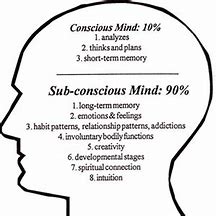
Initialization
Authority and positive social power are mutually independent parameters. By vote, the CEO is granted supreme authority, a deity of his empire reporting to no one. He is the stabilizing force of Plan A, its keystone. In contrast, the MitM inherits his unilateral power to foster prosperity by role as the workforce prime mover. The Plan B keystone role is the connection between head-shed proclamations and revenue-crew design and assign. As he is the only source effective for animating Plan B, he has unilateral veto power over workforce changes. It is a connection role established by natural law. It cannot be modified or circumvented without destroying the Plan B social ecosystem.
No attempts are made to motivate, persuade, or coerce. You are never in a zero sum relationship with fellow MitMs. There is no contest of wills. Implementation experience in a context of mutual, unconditional trust is the great teacher and for reaching Plan B, the only effective teacher.
While class warfare is widely known and understood as the divine nature of humanity, the class warfare between management and labor rages nonstop around the globe. It is a contrivance of the ruling class to entice the labor force to engage it in a fake zero sum competition. The wealth-producing workforce has been narcotized to believe that revenue is fixed at the same time it knows full well that it can increase the size of the pie at will.
As a MitM, take full notice that you are not part of any class-warfare competition. Management is on record calling foremen the final link in the chain of command while treating them worse than untouchables. The workers do not consider the foreman/keystone, flogged into submission by the head shed, as having enough of anything to go to war about.
You are encouraged to visit our Plan B implementation sites. Evaluate the trust-based process and measure the various realized benefits of 16X for yourself – and why not? As you would be, people running Plan B are rightfully proud to show off what their organization is attaining. Interview the veterans and experience the psychological magic of positive reciprocity. Hear the stories of before and after implementation of the Plan B fix to OD. Ask the keystone foremen about 16X performance comparisons. It is a thoroughly happy and fruitful occasion.
Keep in mind, as you evaluate, you not only have a goal in Plan B, GPS and all, you also have a defined, effective, proven process map to take you there from wherever you have to start.
As mentioned earlier, a Plan B transposition process is being installed in a large Midwest corporation. It presents an excellent opportunity for you to examine and evaluate the A to B pilgrimage. There are dozens of keystone MitMs to interview. You can witness keystone functionality and warp-speed trust-building first hand.
Note well your sharp reaction to the live Plan B audition offers because the sprint up the inferential staircase to Plan B will trigger more reflexes just like it. It is a signature response of your subconscious mind to the existence of Plan B and your self-induced paralysis of your subconscious mind is loaded with meaning. With nothing status-wise to lose, MitMs cheer the opportunity to learn how to establish this satisfying and secure way of life. Non-MitMs experience catatonia.
The A to B transposition produces a sharp contrast in cooperative behavior of the workforce. You can witness the happy shockwave radiating out from ground zero when Plan B “Keystone” role functionality is reinstated. As suggested earlier, follow the recipe in “Audition” and engage the hidden barrier to Plan B proliferation yourself. In real life, the famous “death ray” of Buck Rogers to the Plan A network is Plan B reality truth. The mere existence of Plan B is your invisible, all-purpose verbally-triggered stun-gun. Scary? You bet.
Strange, out of thousands of our documented outreach initiatives, no one ever challenged the claim of 16X. No one ever reacted with the default ruling-class excuse for delivering Plan A consequences: “We’re no worse than the others.” Stranger still, no one ever launched the ad hominem counterattack. You are dealing in a psychological realm of an invisible network of entanglements, a great multiplicity comprised of data processing nodes, connectors, hubs, and intermediate processing modules animating the communication network that can neither be understood nor controlled. In practice, the schemes in “Audition” always work. For devout pragmatists, that’s enough.
Onward
This website breaks the silence on unspeakable truths and sacred fallacies – reminding you in print what you already know about the organizational behavior of Plan A. If you get your MitM head through the induction center intact, you’re lined up to start realizing benefits from your reconstituted knowledge bank every day for the rest of your life. Once realigned to reality, psychologically, you will be surprised by how easy it is to be effective with people via trust-building, win-win, and how quickly the benefits start streaming. And to think you had the power all along!
Now, guess what genetic endowment and social conditioning are geared for. Yes, Plan A. You’re watching Plan A, in over its head, in action with the pandemic on the daily news.
Plan B benefits are never one-off. They stream with the incessant flow of healthy, synchronized, trust-based social interactions and innovation. And by positive reciprocity, the clincher instinct of Plan B, the most beautiful, inspirational, heartwarming social behavior of all, tangible benefits increase over time on automatic.
The 16X force multiplier is spring-loaded for the MitMs because the stage of woe has been set by organizations fanatically devoted to Plan A. Still, you will be surprised anew every day by how much benefit you can receive for applying a little “uncommon” social intelligence. It’s the biggest bargain on earth. Spend a day with some veterans and your concept-implementation competency quotient will double.
The Plan B paradigm reflects our empirical test data from live Plan B performance measurements, only possible in trust-based operations. Even when Plan B becomes entrenched, it takes awhile to survey and grasp the awesome scope and reach of the invisible social network system functionalities, especially with some benefits growing by spontaneous positive reciprocity. The goal here is to make it easier for other implementers to gain the knowledge and put the 16X advantage to work. Summary derivation of 16X:
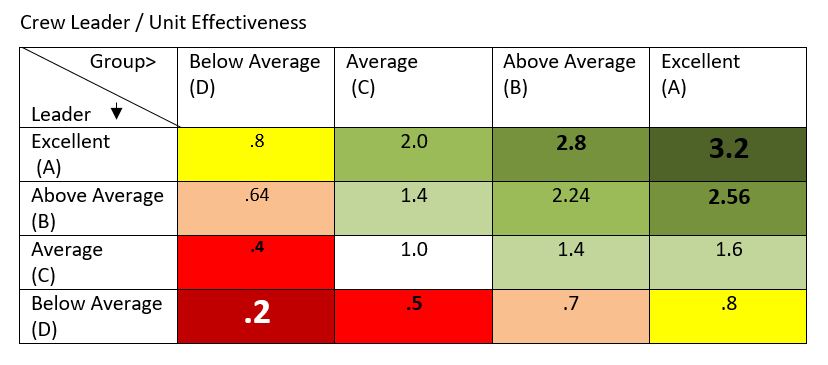
When you get into the prime-mover causing the ferrago of social behavior, the dynamical ecosystem of Plan A, you will discover that the “Plan A ∆ Plan B performance chart” maps the span of unilateral control of the workforce over organizational prosperity. This pill of 16X reality is too big for anyone to swallow in one gulp. As you will see for yourself, all sorts of irrational behaviors are triggered by silence-breaking this truth.
The reason for cognitive paralysis instead of objective thinking forward is simply that when the subconscious mind encounters a novel disturbance, it searches for precedents in its memory bank. When the unprecedented disturbance has no ready-made answer to work with, the subconscious mind stalls on processing overload trying to fabricate one. Catatonia crystallizes when the individual, out of habit, keeps waiting for his subconscious mind to tell him what to say on his grey-matter-driven teleprompter display. “How can I know what I think, before I hear what I say?” He waits in vain.
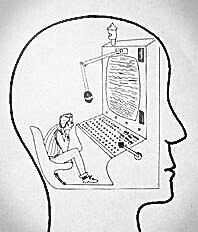
Plan B is an all-conscious-mind affair. The absolute necessity of reality-truth and mutual trustworthiness is basic to effective cooperation and collaboration to attain material objectives. Making positive advances requires unending cognitive effort. Making a negative impact requires no labor of thinking at all. No in-between.
What you inherit from Plan A to start with is a network of unknowable subconscious minds filled with lies and delusions, rumor and gossip, inherently untrustworthy and counterproductive. It is facing a situation that requires actionable-quality truth to attain its material goals. When your measure of success is effective performance, not cultural compliance, any other policy but mutual trust, ground truth and transparency is sure to cripple goal-seeking success.
The knowledge about the mechanisms of action of social system behavior captivates MitMs because the 16X performance advantage of Plan B over Plan A invariably makes the difference between attaining significant, prosperity-increasing goals and failing to do so. It was the choice pharaoh Khufu had to make millennia ago.
Do you want to impose your god-card on the population you rule (workforce included) or do you want your massive pyramid ready for your burial? While the whereabouts of his soon-plundered body remains from his own pyramid is unknown, the artifact affirming his choice is in place and the sole surviving wonder of the ancient world.
No, Khufu was not pyramid project superintendent. Only a Plan B organization could have delivered the great pyramid in twenty years. Plan A failed to build the Panama Canal in thirty years. Without railroad engineer John Stevens and his Plan B effort, the canal would still be tropical wilderness.
The attribute that best defines a MitM keystone in Plan B is his fixation on attaining his goals in his operational reality. Like marooned Crusoe, he lives in proficient survival mode. He is performance-results centered. He is the kind of guy you want for your next-door neighbor. He is congenial and his toolroom has everything, including parts.
Recorded experience, e.g., Lockheed’s famed Skunk Works, affirms that executing Plan B takes far less effort to succeed the mission than Plan A takes to fail it. For us credentialed denizens of the implementation world, by birth, academic accomplishment, and work history, choosing the reciprocal-trust, low-transaction-cost life was a nobrainer. Why would anyone facing the unprecedented, escalating complexities of modern living engage a goal-seeking methodology that’s less productive than the best one on the shelf? Why, indeed?
Most activities in organizational problem-solving are invested in damage control of consequential effects of system Plan A. With trust-based social system Plan B such consequences never materialize in the first place. Plan B existence highlights the fact that what happens in Plan A to all of us shouldn’t happen to any of us.
Subtracting the established Plan A record from Plan B operational activity, comparing the transaction costs of production between Plan A and Plan B, leaves the following residuum:
The administrative, overhead issues endlessly actionable in Plan A, conspicuously absent in trust-based Plan B operations.
- Ca’canny: reduced productivity and availability, “engagement”
- Troublesome quality in products and services
- Stakeholder dissatisfaction
- Stakeholder tort litigation
- Deteriorating community and public relations
- Creativity shutdown: little or no competitive advantage and opportunity for growth
- High transaction costs
- Turnover, overtime, absenteeism and grievances
- Inspecting and policing
- Regulatory and environmental damage
- Insurance
- Corruption
- Safety/injury, waste, damage, sabotage
- Reduced psychological and physical health
- Insecurity, angst, distrust
- Low morale, Esprit de corps
- Reduced resilience to unforeseeable disturbances
Are you spending time and effort on any of the co-existing issues listed above? Just know that your indicated issue is a system-generated issue, caused by the extra transaction costs for operating on distrust, coincident mechanisms you can witness in action. When you encounter one issue sucking up resources, you will find them all. They emerge as a set.
When the social system that causes your pressing issue is fixed, keystone and reciprocal trust, all the other systemic consequences in the above list are fixed at the same time. What a bargain!
Turnover is a highly significant report card on the performance of your operating management. Most turnover occurs as a result of distrusted supervision. Turnover makes big withdrawals from many trust accounts and cascades consequences to a remarkable degree. There are no low-turnover Plan As. There are no high-turnover Plan Bs.
The incontrovertible existence of social system Plan B has changed the foundational assumptions of tort law forever. Now that there is a generic Plan B based on mutual trust, consequences from any of the trademarks of Plan A based on distrust, in the list above, under existing tort law, are stakeholder-actionable felonies. Yes, establishing a trust-based context or a distrust-based context is a free and deliberate choice of the collective.
That means legal immunization from Plan A culpability bought and paid for by the ruling class, distrusted by the entire cast, has forever been revoked by the existence of a trust-based Plan B. As an accomplice of Plan A, indicted by Plan B for the crime of obedience, you suddenly became a felon as well. And you thought you were being a model citizen.
No wonder the head shed goes bonkers. Plan B, trust-based, reality-informed decision making, destroys their basic assumption that supreme authority equals infallible omnipotence and, accordingly, the overhead of distrust is just an unavoidable cost of doing business. It cooks the head-shed groupthink creed that in Hell they’ll get time off for bad behavior.
There are three main factors in 16X. On the negative, wasteful side, most of the efforts of a Plan A organization go to:
- Using aggressive methods proven to fail in solving complex, significant problems.
- Dealing with the consequences of no-keystone, no-trust Plan A; damage control in the guise of a remedy.
- On the positive side, as George Westinghouse unleashed in 1895 for all to see, is the gain in creative contributions by the trusted workforce as an innovation force-multiplier. As implementers, to a man, the competitive advantages that emanate from the workforce diversity are grossly underestimated and are always pragmatic genius. Human nature, being invariant, the instinct of workmanship and creativity per man does not vary from one hierarchical level to another. Just imagine an organization going from 1% innovators to 75% innovators. That’s Plan B positive reciprocity at work.
Anyone can profit
While the MitM himself receives the largest psychological benefit package for making the journey to Plan B, anyone willing to learn and apply the sociotechnical knowledge (here on this website) can receive impressive benefits. At minimum:
- Understanding social behavior – its patterns and mechanisms of action
- Proven, practical choices of action to influence outcomes
- Foolproof trust-building strategies and tactics
When you can’t make sense out of the dysfunctional social behavior, you can’t control the situation to avoid its consequences. The loss of self-control produces and accumulates angst. Putting the sociotechnical knowledge to work, restoring self-control:
- Discharges the angst accumulation, restores security
- Makes a positive difference in your social relationships
Equifinality
When there are independent routes of knowledge development that end up at the same place, you have Equifinality. There are two functionalities of Plan B:
- The operational Plan B, what “done” acts like. The attainable, maintainable goal.
- The process by which you take a Plan A condition, as-is, and move it to the operational Plan B state.

There are four unique trains of thought, data, and logic that join at Plan B’s hips.
- Empirical: audition implementations of Plan B. Actualized benefits measurement
- Scientifiker: Mathematical physics derivation of Plan B. Starkermann dynamics
- Human rights: For the MitM the FLLP and Plan B is a right
- Blood chemistry: The measurable hormone factory deliverables of the subconscious mind
(1) This website gallery, Induction Center, has centered on the empirical proof of implementations because it’s the most direct and speediest way to certify the existence and value of Plan B.
(2) The mathematical physics derivation of Plan B is provided in another gallery of the website. We don’t expect the typical MitM to have the mathematical background to appreciate control theory, a branch of engineering most undergraduates dred. The distinguished champion of social behavior by system control theory, Rudolf Starkermann, took us on as apprentices in 1986. By 1996 we were a collaborator and the empirical arm of Stakermann’s work on social dynamics. We promptly tested his latest conclusions, many counter-intuitive, in real social systems mostly because they worked 100% of the time.
The upshot of the collaboration is a proof of Plan B via mathematical physics, without reference to empirical evidence or anything else. You can’t shoot down Plan B without finding flaws in Starkermann’s dynamic simulations. Professor Starkermann, Swiss, invested 55 years of his life on the application of natural law to social behavior. Wm. Ross Ashby defines Rudy’s approach as Intelligence Amplification (IA). There is only one Nature.
(3) Derivation and discussion of the tie of human rights to Plan B has its own page under kernels.
(4) A completely independent proof of Plan A distrust and Plan B trust is available in your veins, an incontrovertible proof of concept, beyond dispute, that does not require any discussion at all. Namely, blood work. Roll up your sleeve.
Plan A people are chronically overloaded with testosterone. The head shed often exhibits a high-test version of the anabolic steroid-hormone called DHT. The Plan B people are blessed with surges of oxytocin, the trust peptide-hormone. As you may have guessed, since high testosterone blocks it, Plan A individuals lack oxytocin. Plan B individuals have the very low testosterone levels oxytocin requires to attach. Just like your MD, the discussion will continue after your bloodwork data are in.
Now that you have learned a bit of truth about trust-based plan B, reflexively rejecting Plan B just announces that you don’t trust yourself.

Plan B for Head Sheds
Due to the phenomenal windfall revenue brought by the FLLP and Plan B to one large manufacturing organization in the Midwest, its head shed, on its own initiative, requested enlightenment about why Plan B is so successful. The first episodes of the first season in 2020 with the executives have revised our assumptions about the hierarchy leaders of some Plan B organizations. Perhaps because their formidable financial worries of the recent past are now over, perhaps not, the administration of this instance has proven to be open to learning. The full impact of this grand first-of-its-kind experiment has yet to be measured. Meanwhile the FLLP with the keystones continues in parallel. At present, we have no reason to expect the ongoing colloquy to be generic for head sheds.
In trust-building with Plan A people, the workforce context has always been the same. The invariant MitM context greased a generic approach that worked, whatever the personal attributes. We witnessed the dramatic behavior changes when we changed the context. That’s fine for the Plan B keystones.
In dealing with the Plan A keystones, potentate level, the head shed behavior has been consistent. It made it convenient for us to assume that the occupants would act the same regardless of context – a context which in any event we could not change. This assumption is now open to question. When we changed the keystone context to Plan B, it changed the head-shed context enough to trigger a different set of social values – ones we had never experienced before. Distrusting the head shed engenders the harsh suspicion of moral wrongdoing.
The first episode with the potentates was deliberately loaded with brute truths, weeding out the false assumptions and toxic practices, in order to test out the prospects of the top-level group to learn new people skills. If the program cannot deliver the benefit package, it will be stopped dead in its tracks, a condition of our professional licenses. These seasoned executives are, of course, veterans of all sorts to leadership training and groupthink. What they’re getting from us is not congruent with their mental models of management.
We were surprised that the executives did not blanch when the Plan B keystone reality was derived and explained. Some already knew about the keystone species in ecosystems and, admitting human organizations are ecosystems, volunteered the foreman as their revenue keystone level and not themselves!
We make it clear to labor and management alike that we are neither workforce nor head shed. No divided loyalties interfere with the focus on organizational prosperity. Killing zero-sum mindsets and establishing high-stakes trust between keystones and labor are intermediate milestones. For the head shed, the immediate goal is enlightenment to the truth about the mechanisms of action of organizational prosperity.
The occupants of the head sheds are no strangers to angst. They are to learn that angst-free, happy minds are intelligent minds. There is no going forward until the zero-tolerance checklist has been cleared for takeoff. It is far too early in this unprecedented experiment to predict outcomes for Plan A keystones or to be optimistic for general application.
Finally
In view of the fantastical claims for Plan B and the A-B metamorphosis process, your natural skepticism and disbelief are defensive reactions coded in your genome. Don’t get anxious about the validity and power of Plan B, the pathway to get there, or its sustainability. While there is nothing to buy, there is no try. The antidote to your Plan B skepticism is taking action:
- Visit implementation sites, examine and evaluate. Measure realized benefits
- Arrange for inhouse demonstrations
- Audition ongoing hyperlearning programs
- Keystones
- Head shed
- Interview FLLP veterans
- Try it before you buy it, three calendar days
- Audit the mathematical physics derivations presented on this website and our books on Amazon
The Plan A nations now, 2020, have a massive trauma in their face for which business as usual is no match. You have been given ring-side seats to an exceptional opportunity to witness and experience Plan A competency measured by an invisible virus.
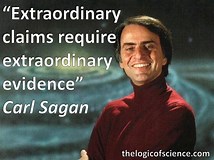
Views: 139

